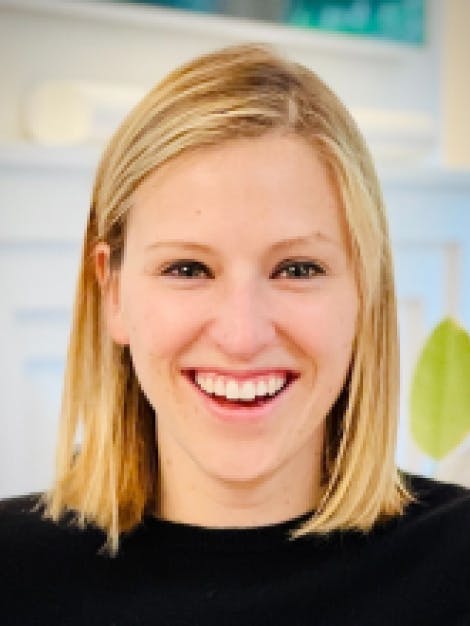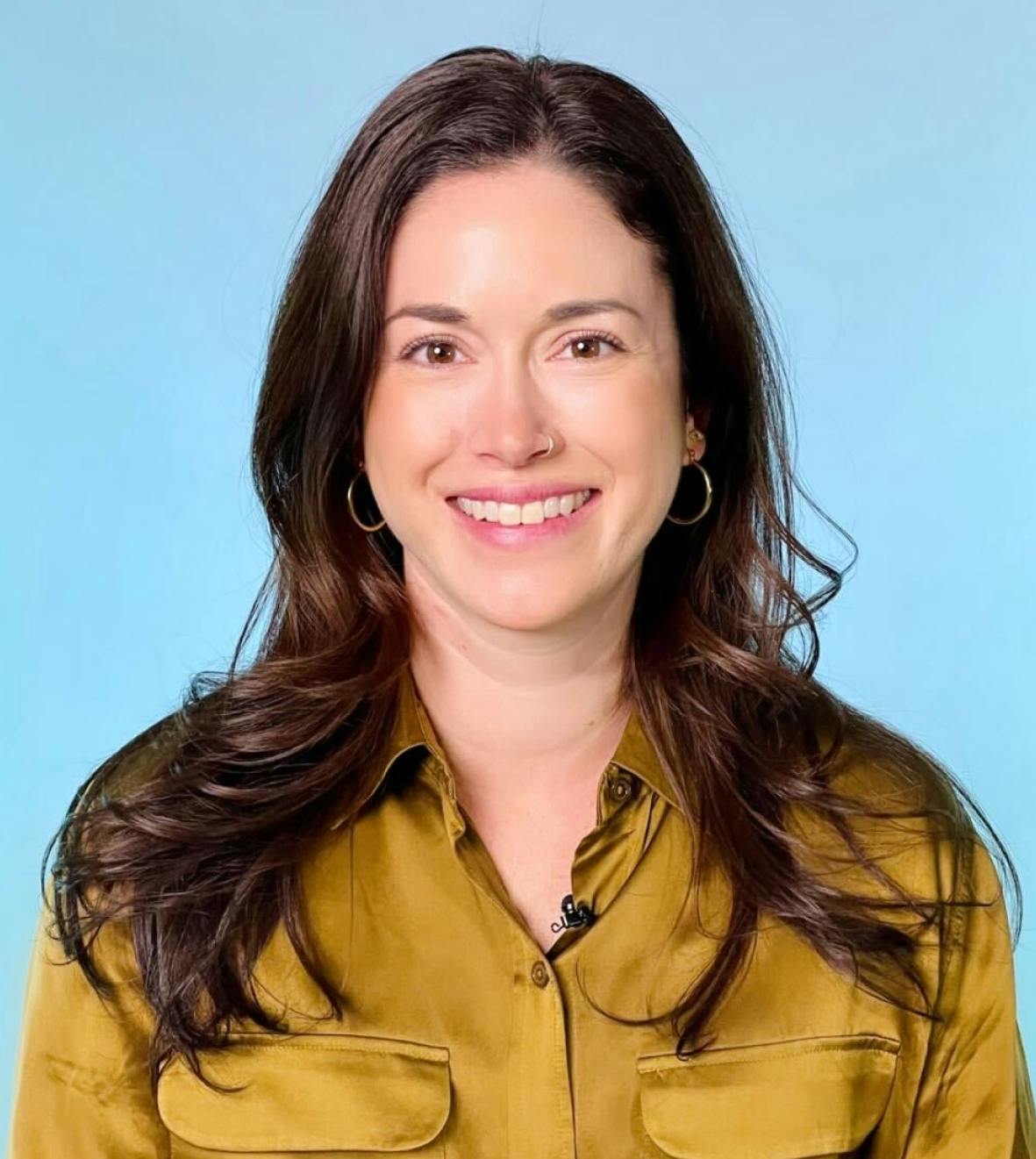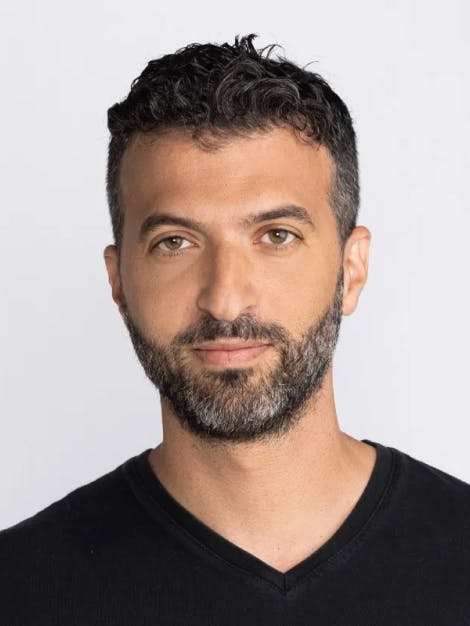Season 8 - Episode 5
Organizational Design & Alignment with Iterable VP of Product
Bela Stepanova, VP of Product at Iterable, gives us some insight into her journey of switching from engineering to product. In this episode, she touches on the importance of organizational design and how to create alignment across the company.

“How did you break into product? ”
As a kid, I loved math and I was just obsessed with it. I never knew what I could do with it. And at some point, I started reverse engineering all the different pieces of code. I fell in love with it because it made something real out of Logitech. Out of what I loved. It made something real that I could grasp and kind of see the outcome of. And so I fell in love with computer science. Since then, I was a software engineer, building FinTech products. I got exposure early on to working directly with customers and working directly with users. I just absolutely fell in love with it and never looked back. Asking customers ‘why, why, why’ multiple times and really getting to the root of the problem rather than starting with a solution. Getting that kind of fulfillment from seeing your users and talking to your customers directly really turned me onto product. So, I switched from software engineering to product and never looked back.
“I love how you said ‘why’ three times because the first answer is probably not enough and as product people, we want to dig deeper.”
Yeah, absolutely. I would say it 10 times. Sometimes, the problem is that if you keep asking, I think people also tend to have a bias towards telling you what they meant for the solution to be. Everybody loves to play a product manager and a designer in kind of this brainstorming session. And I think, getting really to the root of the problem takes a little bit of extra investigation and a little bit of extra effort.
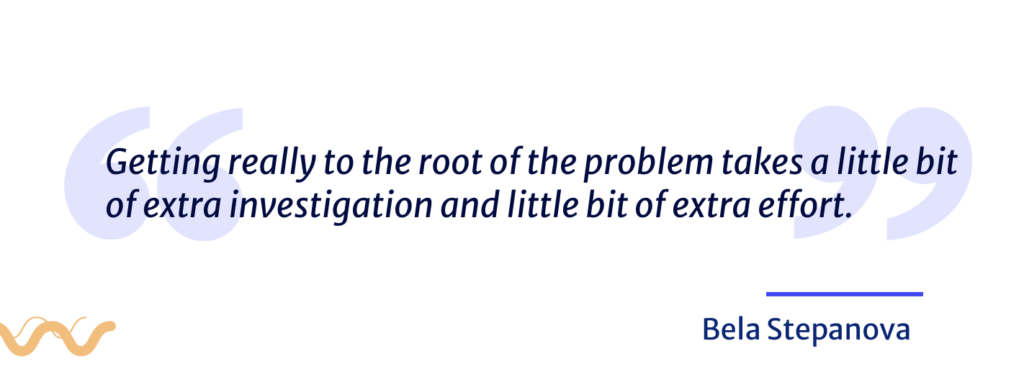
“So one of the things I found unique in your profile is that you were a software engineer and then your next title was chief of staff to the SVP of product there. Tell me more about that.”
Yeah, it’s very interesting. For the first few years after college, I was in consulting so I really focused on building products and spent a year building a product, releasing the product, optimizing the product. But then I would leave to the next product. And so that sense of ownership. I really wanted to own the products. Those were my babies. I wanted to continue to be with the products. And so I switched to Box and at the time because I was in consulting, I was used to working within the scrum team. But, I didn’t really know how the larger engineering organization or a larger product organization works. So I actually went back to my engineering roots at Box and it was sort of early on. So it was multiple hats including some program management and some operations. And I wanted to learn how engineering functions in an organization.
I wanted to get that birds-eye view across the board because I felt like that’s a skill set that I was missing in order to be successful in my career. So I did that for a year. Very naturally, I started doing product work. It’s just because that’s what I tend to lean into. That’s what I love. I ended up building out product roadmaps for the teams that didn’t have roadmaps or didn’t have business roadmaps at a time, mostly focused on technology, which was our backend theme. And I first talked to the CPO and said there are all these teams that don’t have technical product management today. We have so much business value there. Why don’t we think about technical product management? And by the way, here’s a roadmap scenario. So, I would think about it and I’d love to volunteer for that. Instead, he said, that’s great. We definitely need to do that. I have a bigger problem right now. Why don’t you come to fill that for me? And that’s how I ended up being a chief of staff role. So it was a little bit of a zigzag, but really focusing on what did I want to learn and what skill sets I want to learn versus how to progress to that next level as a product manager.
“We get approached by a lot of people who have an expectation of needing the Product Manager title. Whereas others are willing to raise their hand and offer help which usually leads to a better outcome in the future. So, I think that taking the approach of ‘How can I help’? versus ‘what can you give me?’ is really powerful. ”
And then what skill set can you build? A lot of times in internal mobility, I’ve seen a lot of folks transfer over the years to the product team. And a lot of times it started with, as we all know, we’ll run really fast, especially in the smallest startups and in high growth, scalable startups. And there’s a lot of need always right. And product managers can’t solve it all. There’s always that next project we haven’t started yet or haven’t researched yet. So there’s always a need for help. And I’ve seen a lot of people transfer successfully to the product teams when they raised their hand and say ‘Hey, I will do this extra work. And I will sort of be mentored by somebody and play the product manager role to help the product team without the title. That really builds the skillset and the relationship. I think raising your hand to help is always a great, great way to create opportunities for yourself.
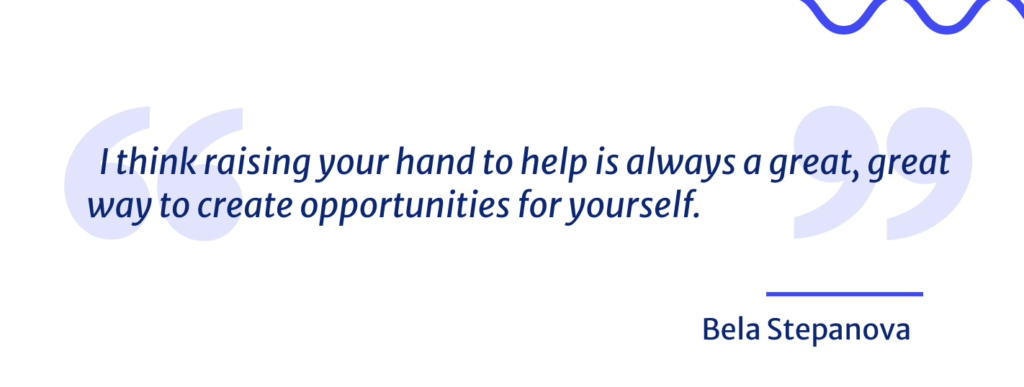
“So moving forward, you’re VP of product at Iterable. Why don’t you tell us a little more about the status of the company?”
We are a high-growth startup. We are about 400 people now. We’re growing really, really fast. I think we’ve hired a lot of people through COVID and the company just over the last year has grown tremendously. Our product team has grown from seven to I’m losing count. I think we’re now about 25 people. It’s been a lot of fun and a really fun journey. For those who don’t know what we do today, we power marketing lifecycle automation and also transactional messages. So really thinking about unifying that consumer experience and how companies talk to consumers. And that brand experience that they have. It’s been really fun. And we welcome everybody to have a look, I think especially for the product managers directly. I know in the past I have built transactional messages from scratch and having to go from engineering to AB test messages all the time without having full control. That’s something product managers have definitely used in their collaboration with the marketing of the final product.
“I resonate with the problem you mentioned about trying to create the infrastructure to message users because now there are different ways of communicating like in-app notifications, push notifications, text messaging, social media, etc. And back in the day, there wasn’t really a plug-and-play solution. So as a PM, I would need to go talk to my engineers and ask them about custom building push notifications at this moment. And now we’re in a whole new world where someone who’s not technical can really customize the entire user journey, know when to approach customers, and create a complicated logic without really involving engineers. ”
Yeah. And what’s really interesting is that it’s not just the engineering effort that you say, but also how smart you can get, how much you can test the journey. But one of the things that were really hard in infrastructure is knowing when to communicate to users and cross those with targeting. Targeting based on a lot of times for products, you have all this data going into the data warehouse and you can’t access that in real-time. How do you target somebody at the right time to deliver the right value? And business users being able to actually use sophisticated segmentation and being able to really customize that journey, as you said. Not just the individual messages, it’s a really, really big power. And obviously, on top of that, AB test the content and the timing and the targeting all without having to go back to engineers and sacrifice all the things on your roadmap.
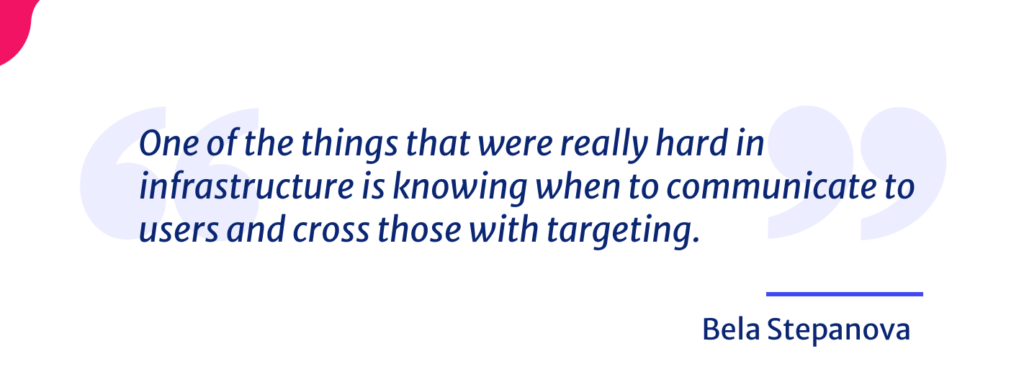
“So how do you see product managers, in particular, interacting with marketers and engineers and other functions in order to deliver those types of experiences?”
I would say it varies from organization to organization that I see. A lot of times that interaction and that collaboration sparks within mobile because a lot of times with mobile, you still have to incorporate SDKs and it used to be that mostly mobile engineers are doing the mobile messages. So I see a lot of the spark for tighter collaboration starts with mobile efforts. Then the big intersection that I also see now is on a transactional messaging site. It’s an opportunity for an upsell. It’s an opportunity to make sure the brand is displayed in the right way. It’s an opportunity to actually understand and incorporate and unify the journey and the experiences that your users or your products have. So, those are kind of a couple of functional areas where I see marketers and product managers collaborate more and more.
“I agree. There was a time where data was literally guarded by the data team. And now that not just data teams, but anybody including marketers and PMs can understand what’s going on without running CQL. Just having a sneak peek about what’s happening and then running their own experiments makes the whole organization more self-sufficient and more agile at the end of the day.”
Absolutely. And if you think about it from the organization, it’s just more fun to work together, it’s great. But then if you think about your own customer experience, it’s not really fun for anybody to interact with one department or part of the product in one way, but in different departments and in a different way. When we think about our experiences in product, both physical or software products, we think of a brand as one. So if you can tell when you interact with different departments differently, or if like ‘Hey, marketing is not working well with product’, you can really tell on the experience that the brand that the product provides, and that’s not great for our customers. I think that’s actually very interesting too, even with product organization, how the product is positioned or structured. Sometimes you can literally see that on the website, on the apps, on the product, if they’re not coordinating well.
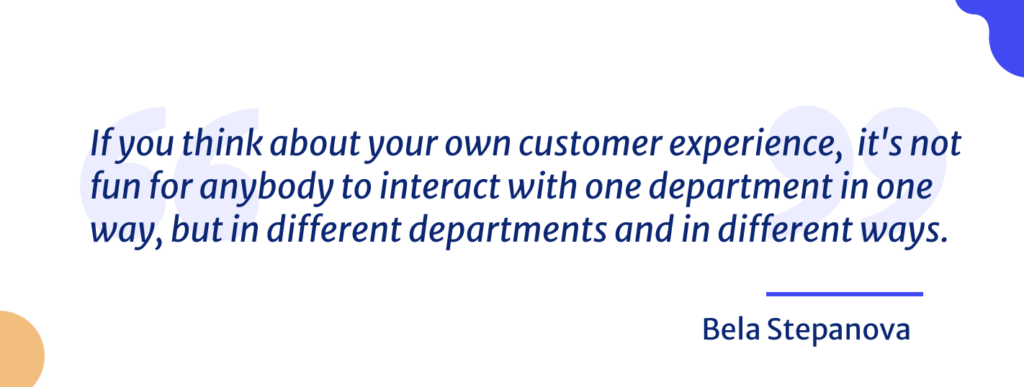
“How do you go about building your own product team?”
Yeah. I mean, there’s tons and tons to cover that. I think we could talk a little bit about good organizational design. We can talk a little bit about people. I’ll start with the people aspect because, at the end of the day, I think the right people are everything on a team and ultimately define success. When I’m hiring, I always think of my team as individual puzzle pieces. So how do you make sure the puzzle pieces are really coming together and that as a team, they’re set up for success? And so I think about the skillsets, superpowers, and making sure they’re all complimentary. So that together we’re really, really strong and can build the best product. I think organizationally, there’s always an interesting question of how do you build the organization in a way, especially if you have many scrum teams at some point and the company has grown a lot. How do you do that? So you make sure that your strategy is doing the right things. The most important thing that you can still focus on your strategy is not just optimized for that local Maxima for each scrum team. And so making sure that you structured in a way that you have enough thought and enough coverage where folks are thinking across the board, as well as the deep and individual pieces as well.
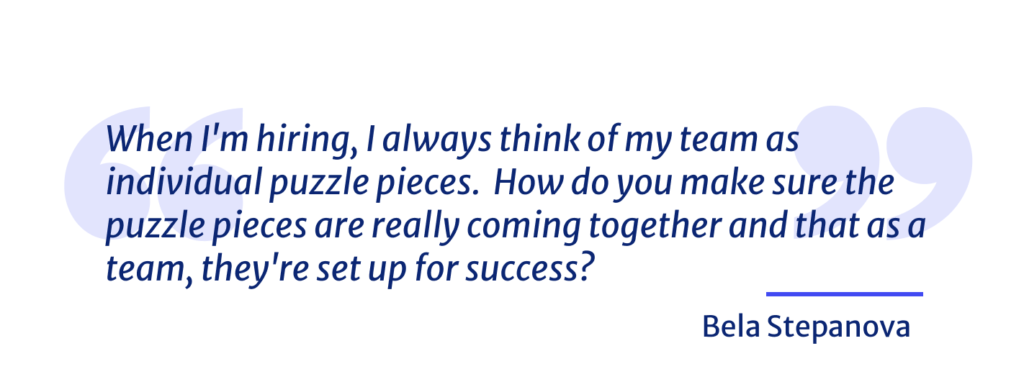
“So are there any specific insights that you can share in terms of ratio PM per engineer or having a ‘two pizza team’? ”
Yeah. It really depends on the type of team and the product that you are building. Some products are a little bit more technical, some products have a lot more UI real estate. So it really just depends on the product. I would say in general, what I’ve seen work well is somewhere between six to nine engineers on a scrum team. If it’s an infrastructure scrum team for a particular product, they may not need a PM. The majority of the other scrum teams are likely to need a PM. So that’s kind of the ratio of engineers to PM. Again, there’s no rule of thumb that works for everybody, but I think it’s a good starting point to consider. Again, depending on the product, if you do have a lot of complex user experience, I love the idea of the one-to-one of a PM to a designer. Again, maybe if it’s a little bit more technical, you don’t need as many designers. There are also designers that are slightly different, that focus on, for example, developing the experience and even the API design And it’s a slightly different role. The one thing I would say about designers and PMs, I’ve seen companies and maybe that’s a little bit of a personal pet peeve of mine, where the design team grows really fast and the product management team grows slower or the other way around. And it creates a funky cultural experience. There’s a little bit of throwing things over the border where teams don’t feel quite functioning as one. So I love the idea of growing those designers and product managers at the same time through the team. So that there’s really that sense of one team because, at the end of the day, we’re building one product.
“I think it’s important to clarify that the product team is not just made up of product managers. You mentioned designers as well. We are all building this together.”
Yeah. That’s a great point. For example, in my product team right now, we have multiple roles including product managers, designers, technical writers that overlook documentation as well as UX copy. Sometimes UX copy could be a slightly different role as well but for us, that’s what it does. And then we have product separations. And then we also recently added partner managers. Were actually closely working now as partner managers as well, and that encompasses the whole product team.
“As the VP of product, how do you try to create alignment across the entire product organization?”
Yeah, it’s a great question. What’s actually even more interesting is that as product managers, I think a lot of times we’re looked to create alignment across the entire organization and not as a product organization. Because at the end of the day, if you look at B2B products, for example, we have customer success, we have sales and everybody depends on the product that we build and everybody has input onto the product that we build as well. So really thinking through how do we make sure that we’re aligned at the highest level with the vision for the product and where the company’s going? That we are aligned on the go-to-market strategy with the company as well. And making sure that everybody in the product organization is aligned on those aspects too.
And then double-check on what is the focus? Where are we going to focus this year? What sort of problems do we want to solve? Not just what features we want to build. What problems do we want to solve? Why are those problems the most important? How would we be different in those particular set of problems from everybody else in the market? What is the best way to solve them? So really thinking through that strategy, the vision, and making sure that we’re aligned on the problem set. And then obviously as we go along, there is a lot of structures and processes in place to align on the execution itself.
“I just remembered one thing that the former CPO at Box, Jeetu Patel, said which is that alignment can be the enemy of innovation. And now he’s at Cisco and he was trying to balance alignment with obviously moving forward and getting things done and making sure that we don’t spend too much time in the meeting room.”
Yeah. I think a lot of times, especially now with everybody being a little more distributed across the tech world in general, thinking through what can you do? What can you do in person? But I think it’s also really important, especially for product managers who tend to spend a lot of time in meetings, unlike other roles, thinking how do we create enough space to think innovatively? How do we create enough space to brainstorm and not just get caught up in the execution itself? And I think that’s sort of a forever challenge. Folks definitely try the different tactics, but that’s definitely something to be aware of as a common trap. Not having enough to think and you just sort of executing what’s happening, but in fact, the market is moving all around you. And over the last year and a half with COVID, the market’s been moving so fast, especially in areas like ours.
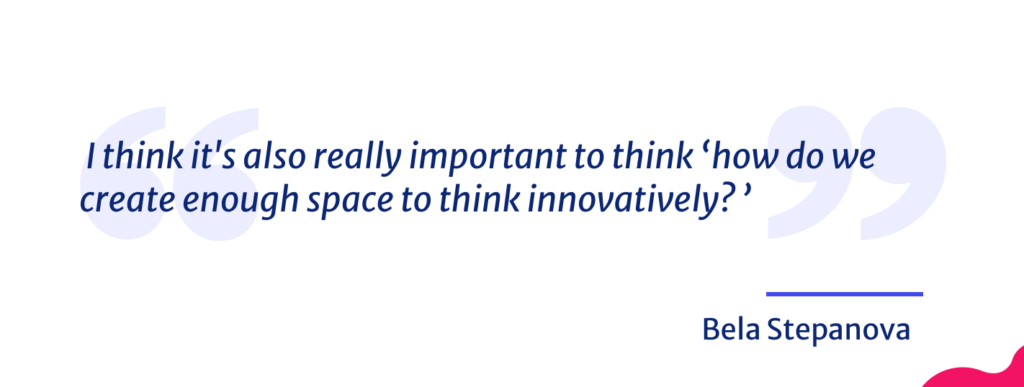
“PMs by definition, start as the individual contributors. And if they take the managerial path that you took, at some point you start managing people, PMs and others. But we didn’t go to school for that. Things are changing fast. So I think what I’ve heard from different product leaders is that you need to be close enough to the action to realize that it’s not just about alignment or meeting. It’s also about building and talking with customers.”
Yeah, absolutely. In fact, I don’t think any leader should come out of the water of talking to customers at any point. You asked me the other time is what something I do that may be perceived as not scalable but I still do every day? I think it is talking to customers. I still personally read every beat of NPS feedback that we get. I read every single sort of notification from Salesforce of what we won and what we lost. Every day, I jump on a lot of customer calls. I think some of those things, it’s not just about people management. You’re still responsible for the product and the success of the company. I think there is another aspect. There’s a customer-aspect on talking to customers at all times, reading directly to the users of the product, observing the users of the product. And then depending, I guess, on the preferences and superpowers of our product leader. For example, we have design reviews and product concept reviews that we put every product through.
“How do you actually hire PMs at Iterable? ”
Yeah. Great question. You know how I mentioned earlier that when I think of the team as puzzle pieces, how do we all fit together to make the best puzzle possible? If you hire everybody with a computer science degree, we’ll kind of think the same way. We’re all going to be that same puzzle piece. So innovation and creativity are going to be limited to that particular way of thinking. So I think it’s absolutely wrong to hire everybody with a computer science degree. At some point also, experience trumps the degree itself. So depending on the role, obviously some technical roles, maybe if you’re building APIs in this case, you might need a little bit more of a technical background. Background doesn’t necessarily mean a degree from the university. I’ve hired folks to be product managers from biology majors, and they’ve been fantastic at it. And they think slightly differently. Everybody brings something different to the table. And I think creativity really matters in the role of a product manager, a designer, or any other product role for that matter.
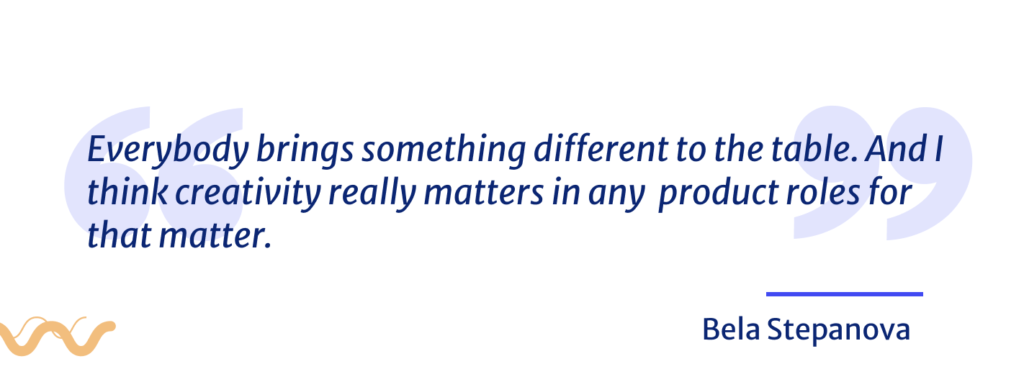
“I think having probably product role models like yourself that are really making an effort to hire diverse pool of talented people is really inspiring. We all need to understand that in order to represent the customer, especially when you’re building something that is global, you need to have some sort of representation in-house.”
Yeah, exactly. And I think just generally, diversity of thought matters so much and that comes from the diversity of backgrounds, whether it is cultural, ethical, or educational. There are just so many different aspects of diversity. And I think having more and more different types of thinking at the table is incredibly important.
“Are there any key questions that you like to ask during the interview process?”
Yeah, absolutely. There are a few that I always ask. One of them and I actually ask that to other roles too, not just product managers in the very beginning with the introductions. I always ask people, what would you like to learn next? And I don’t mean that as like a hobby or generally that’s more kind of career-related as they tell their story because what I really want to understand is what are they passionate about? What are they hungry for? What opportunities do they want to have? Because one of the things that I evaluate when I hire is not just, can you do the job, but will you enjoy the job? Will he be happy with the job? Is it ultimately going to be the right experience and the right environment for you to blossom? And if you’re looking for different types of opportunities that maybe I cannot provide for you right now, then it might not be the right job for you. So that’s one of my favorite questions. I honestly ask that for different types of levels. And it’s usually really telling what folks answer on that question.
“Without meaning to put you on the spot, I want to turn this question back at youand ask you, what are you curious about learning these days?”
I can answer it more tactically, but also, if you turned it around to me as an interview question, one of the things that I’ve been learning over the last couple of years, and especially coming into the head of product role is how do you see further? I think the more and more you grow in your career, your horizon starts expanding. In the product roles a lot of times we’ll talk about roadmaps So sets of problems. Maybe we’ll see a year in. Maybe we’ll have like a vision a couple of years in, but how do you put on those glasses that allow you to see a bigger horizon, like five years down the road or 10 years down the road. How do you create that creativity and that space, create the right setting for your mind to really think about it? And that’s something I’ve been fascinated about. I love storytelling. I love blank canvas brainstorming. That’s something I’ve been personally practicing and learning from over the last couple of years. That’s been really exciting.
“What would you say are some marks of great leadership or key moments that have gotten you to where you are today?”
I think things that helped me, first and foremost, are probably curiosity. Some of the roles that I’ve had in the past that were more door opening in terms of career weren’t listed as roles. At Box, for example, I founded our growth team at a time B2B growth has been a sort of early on topic. It wasn’t clear if that’s what really B2B companies want to do or B2C I guess, is more important. And that role was not on the table. That team was not on the table. I made a business case for that team to be on it and why it’s important for our business and how to go about it and build out a team from there.
And it actually helped me build a tremendous network because I have not done that before, even though I have proposed it. And in fact, I proposed it to do that for the company independent of me. But I haven’t done it before. And also just reaching out to people and being curious and wanting to learn really actually opened up a network as well, externally because I just started asking for help. I just started meeting with leaders who’ve done growth in B2C companies and a couple at a time that actually have had some experience in the B2B companies. It was fantastic. I met tremendous people that I just absolutely love to this day. And they helped me in my career in general, but they also helped me in that role. So I think curiosity, the desire to grow, and having that self-awareness is important for leadership.
I know I constantly work on self-awareness knowing what I know, knowing what I don’t know, where I need to push myself where I need to reach out for help definitely helped me along the way. I’d say probably another one, especially if folks are looking to work in the startup world, I call it sturdiness. Something I will look for in the interview process as well is really being able to go through the changes, and seeing further out on the horizon, and being able to face challenges in a way that you can process them, help others, In the startup world, be that a high-scale startup and kind of a later stage, there’s just so much change all the time. Sometimes you need to pivot the strategy. Sometimes people will come and go. Sometimes things happen and things always change. And so being able to enjoy that and ride with that change. Also think about what’s best for the business and own the problems I think is incredibly important. And I do think it helped me a lot through my career as well.
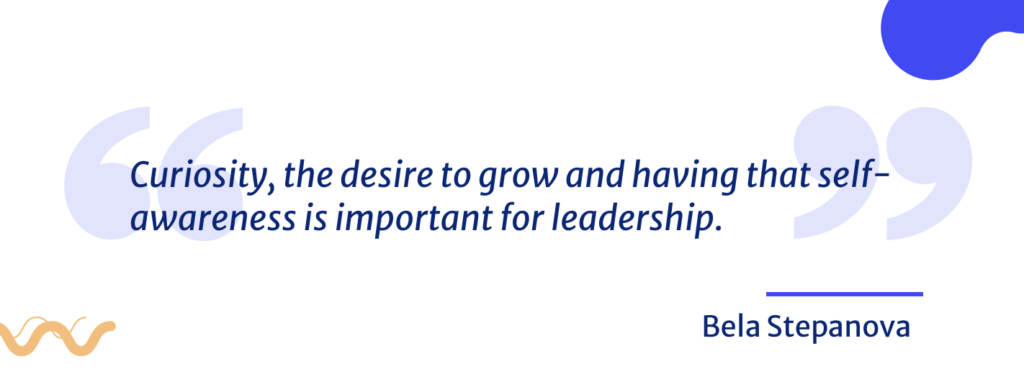
“So what would you say to your younger self when you were at Box? ”
Yeah, I would say it’s okay not to know. That’s part of the fun. It’s okay to be nervous. That’s also part of the fun. If you’re not nervous, you’re not doing something big enough and not giving yourself enough credit. I would say acareer is not a race. Career is not just about titles. I don’t want to say they don’t matter at all but it’s really about what you learn, the story that you create for yourself, and the skillset that you build. And thinking about your career, it’s not necessarily a race to that next title, but a race for opportunities and for learning. The hunger to learn is incredibly important to maintain in a career. Choose the places and the environments where you can blossom. We all have very different superpowers. Find the places where you’ll be supported and where you’ll have the right opportunities. There may be sometimes really lucrative places, but maybe they don’t have the right opportunities based on what that individual wants to learn. And I think the environment in which you put yourself in your career has a lot to do with how successful you’ll be in your career and whether you’ll be able to blossom there. So I would really recommend thinking through your career as something you own and seeing interviews as a two-way street to find just the right place where you will blossom yourself and make sure it’s right for you and not just the company and the resume.
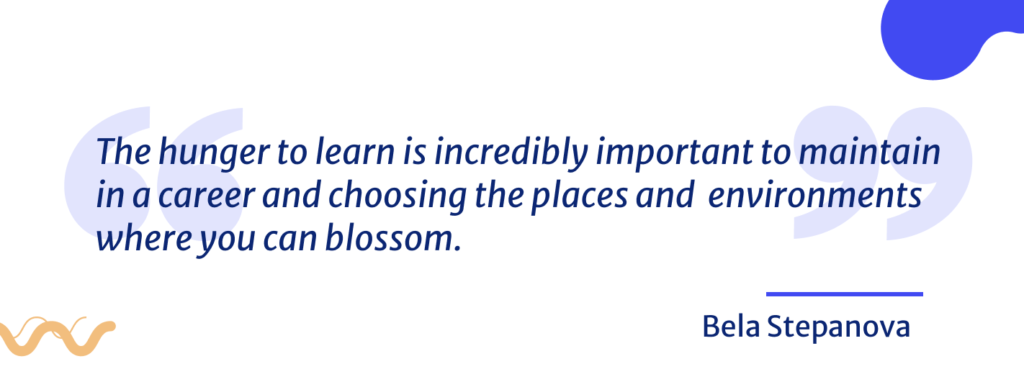
Listen to our episodes on your favorite platform
Stay tuned for new episodes
By sharing your email, you agree to our Privacy Policy and Terms of Service

